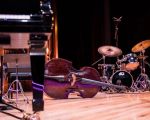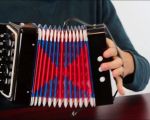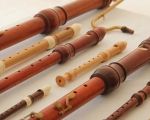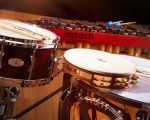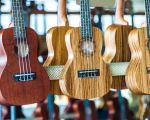Introduction: Why Music Matters for Young Kids
When I first introduced my child to music, I was amazed at how quickly they took to it. Music has a magical way of sparking creativity, improving coordination, and even enhancing cognitive development in young children. Whether you’re a parent or a caregiver, finding the best musical instruments for young kids can make a huge difference in their development. In this article, I’ll share my experience and explore the best musical instruments for toddlers and young children, giving you a guide to help foster your child's love for music.
1. The Power of Music in Early Childhood
Music is more than just entertainment—it’s a tool for development. For young kids, playing a musical instrument can improve memory, concentration, and even emotional regulation. Instruments like drums and xylophones engage motor skills while also teaching kids about rhythm and sound. Introducing your child to music at a young age can help them develop critical thinking, patience, and creativity. Research has shown that kids exposed to music early on tend to have better language skills and enhanced problem-solving abilities. Now, let’s dive into the top musical instruments for kids that can provide both fun and educational benefits.
2. Best Instruments for Toddlers: Simple and Engaging
For toddlers, it’s essential to choose instruments that are safe, easy to use, and engage their senses. A tambourine, maracas, or a simple drum set can be fantastic for young kids. The colorful, tactile nature of these instruments helps toddlers explore different sounds while developing motor skills. I found that my little one loved shaking maracas along with the beat, which not only kept them entertained but also helped them understand rhythm.
3. Xylophones: A Great First Instrument
If you want to introduce your child to the world of melody, a xylophone is an excellent first instrument. These colorful, easy-to-play instruments are perfect for young children. They come in different sizes and materials, making them suitable for a range of age groups. I remember the joy my child experienced when they learned to tap the keys in tune with simple songs. This simple yet effective instrument helps children develop fine motor skills, hand-eye coordination, and an understanding of musical notes.
4. Drums: Building Rhythm and Coordination
Drums are an incredibly fun way to help children develop rhythm and coordination. Whether it's a bongo drum, a snare drum, or a drum set, kids love banging away and making noise. But beyond just fun, drumming encourages kids to learn patterns, boosts auditory discrimination, and improves muscle control. If you’re introducing a drum to your child, make sure it’s child-friendly and lightweight. My child loved their mini drum set and enjoyed drumming along with their favorite songs. It’s a great way to introduce them to rhythm, even before they can read music!
5. Piano: Nurturing Musical Ear and Fine Motor Skills
For slightly older kids, a small piano or keyboard can be a wonderful option. The piano helps children learn about pitch, scales, and melodies while also building hand-eye coordination. My niece started with a toy piano, and soon enough, she was playing simple tunes. What’s great about the piano is that it provides a solid foundation for other instruments in the future. Many keyboards come with light-up keys that guide children as they play, making it even easier for them to learn. A keyboard or piano also opens the door to future lessons and more complex musical education.
6. Instruments That Teach Cause and Effect
For young children, instruments that teach cause and effect are vital in their development. Toys like a xylophone with mallets or a bell that rings when struck teach kids that their actions produce specific results. These types of instruments help children understand their ability to control sounds and learn about cause-and-effect relationships in a fun and interactive way. One of the most delightful moments as a parent is watching my child realize that tapping the xylophone creates different notes and sounds—instantly linking their actions to results.
Conclusion: Choosing the Right Instrument for Your Child
Choosing the right musical instrument for young kids depends on their age, interests, and developmental stage. For toddlers, simple instruments like tambourines, drums, and maracas are great for developing motor skills and rhythm. As they grow older, instruments like the xylophone, piano, or even a child’s drum set can help them develop a sense of melody and rhythm. Remember, the goal is to foster a love for music in your child, and with the right instrument, you can help them start their musical journey on the right note. It’s not about perfection—it’s about enjoying the process, developing new skills, and having fun. So, consider what excites your child the most and go from there!


